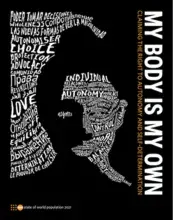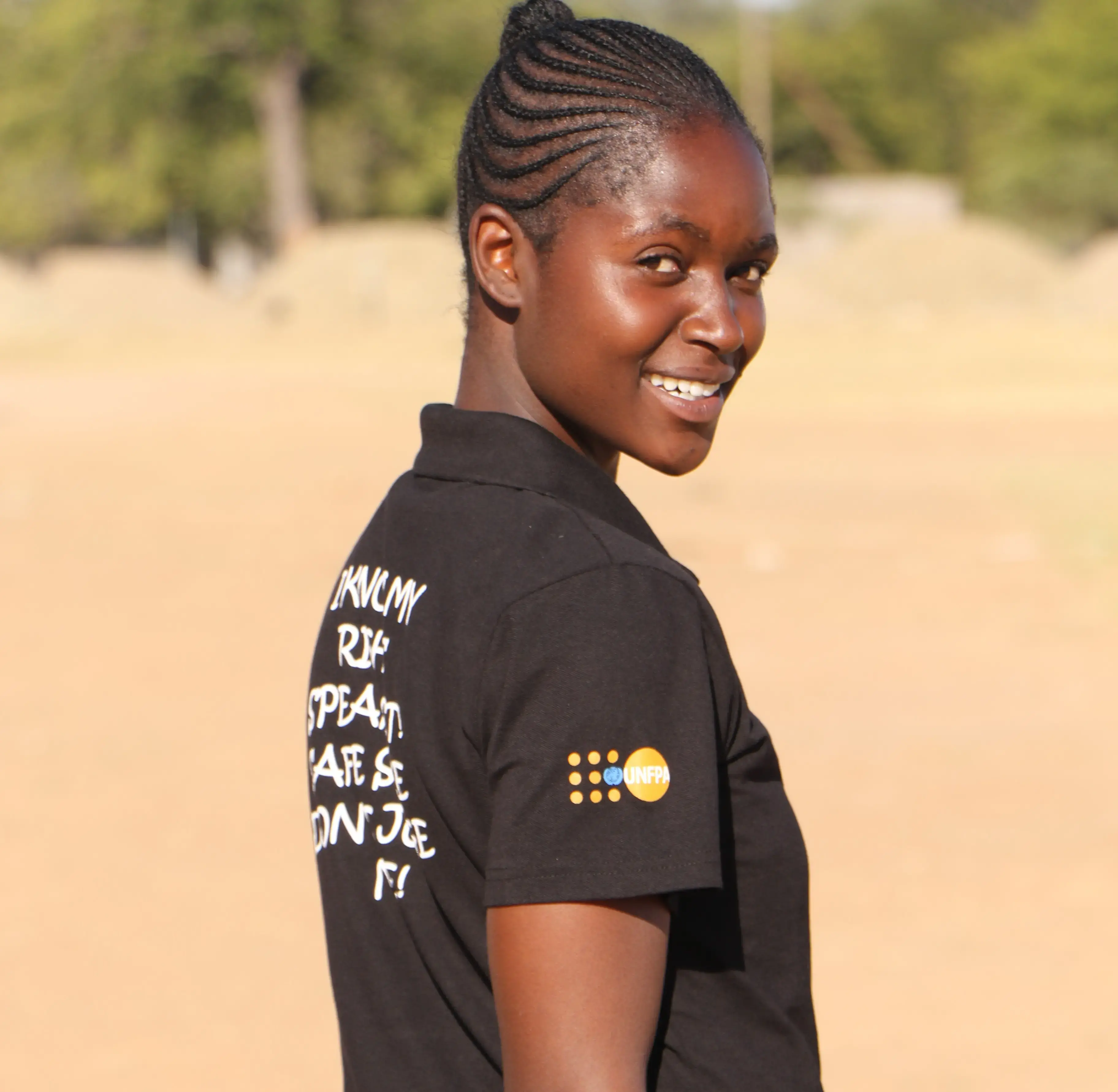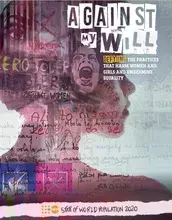Pregnant with her sixth child, Nibitanga Suzana, 27, was forced to make the hazardous three-day journey from Bujumbura to the refugee camp on the Tanzania border when the Burundian conflict erupted in April. By the time she arrived, she had nothing left.
“I left other family members, my husband and my property. I was only able to bring one of my daughters,” she said.
Today, she is one of 143,000 Burundian refugees scattered across Tanzania, Democratic Republic of the Congo, Zambia, Uganda and Rwanda. Many wonder when they will be able to return to their homes. Suzana’s experience is all too familiar for millions of women and adolescent girls in emergency situations across Africa.
The scale of the problem
Globally, approximately 60 million people have been forced to flee their homes, of which 38.2 million are internally displaced and 19.5 million are refugees.
In Africa, Ethiopia has the largest refugee population of nearly 700,000, closely followed by Kenya with over half a million. Sudan has 3.1 million internally displaced persons, while the Democratic Republic of Congo has 2.8 million.
Many of these displacements are due to conflict, violence and human rights violations, but natural disasters are also growing in intensity and frequency, with 200 million people affected globally each year.
Not only do women and girls make up the majority of those affected by humanitarian crises, the consequences of disaster and conflict for women and girls are often more severe than for men and boys.
Sexual violence increases during humanitarian crises
The risk of sexual violence and exploitation of women and adolescent girls increases dramatically following disasters. Evidence shows increased incidents of gender-based violence during humanitarian situations, including in times of natural disaster, such as flood and drought.
Red Cross volunteers and UNFPA staff working with people affected by disaster and conflict frequently hear personal accounts of rape and other forms of gender based-violence. Many times, there is nowhere for women to report incidents of sexual violence or they are too frightened of the repercussions in their community if they do report.
During the January flood crisis in Malawi, Red Cross volunteers reported cases of women engaging in transactional sex for food. Ensuring household food security is often the responsibility of women and girls. In the eyes of their families, providing meals remains a woman’s responsibility even during crisis situations when there is no food and no clean water. This expectation leads to extreme stress for women and girls and can increase their vulnerability to family and intimate partner violence.
Health services fail women during disasters
The health of women and girls is also disproportionally compromised following a disaster. Displaced couples are less likely to use family planning methods because services are not available or the struggle to survive day-to-day makes child spacing seem like a low priority.
Unwanted pregnancies add to the burden of women and families who are already struggling to survive. Risks to women and their babies increase during times of conflict and disaster because of the poor services that are available for safe pregnancy and childbirth.
During humanitarian crises, young people find it difficult to access youth-friendly sexual and reproductive health information and services.
This can lead to risky sexual behaviours, that expose young women in particular to sexual exploitation, early and unplanned pregnancy, HIV and sexually transmitted infections (STIs).
Making recovery possible
During disasters, women and girls tend to have less access to, and control over, resources, including the information and assets necessary to cope with hazardous events. Because the daily tasks that are traditionally allotted to women, such as collecting water and finding food, are more difficult and take so much longer following disasters, women have less time to rebuild their homes and livelihoods.
Where women are able to participate fully in recovery planning and processes, families and communities recover better and faster. Women and girls are only able to participate fully when their rights are protected.
UNFPA and IFRC work together to prevent infection during childbirth in disaster situations through the provision of safe birth kits and the promotion of reproductive health. In many African countries, UNFPA supports the establishment of safe spaces for women and girls, training appropriate personnel in medical care for rape survivors and working with social workers to reintegrate those affected by sexual violence into society. IFRC works with communities to reduce the risk of gender-based violence among displaced populations and prioritises assistance to female-headed households during relief and recovery operations.
Call for action – enhancing resilience
The humanitarian imperative to reduce gender-based violence, improve health services for women and ensure equitable access to relief and recovery support during humanitarian emergencies is clear. However, prioritising women and girls is also crucial for ensuring longer term social and economic development and building resilient communities.
Decades of experience in southern and eastern Africa have shown us that sustainable and durable peace and recovery requires the full involvement and equal participation of women and girls.
Delivering humanitarian relief during disasters and conflicts is always challenging. But we must not let these complexities draw our focus away from the rights of women.
Authors:
· Dr. Michael Charles, Regional Representative for Southern Africa of the International Federation of Red Cross and Red Crescent Societies (IFRC) and
· Dr. Julitta Onabanjo, Regional Director UNFPA East and Southern Africa Region
“I left other family members, my husband and my property. I was only able to bring one of my daughters,” she said.
Today, she is one of 143,000 Burundian refugees scattered across Tanzania, Democratic Republic of the Congo, Zambia, Uganda and Rwanda. Many wonder when they will be able to return to their homes. Suzana’s experience is all too familiar for millions of women and adolescent girls in emergency situations across Africa.
The scale of the problem
Globally, approximately 60 million people have been forced to flee their homes, of which 38.2 million are internally displaced and 19.5 million are refugees.
In Africa, Ethiopia has the largest refugee population of nearly 700,000, closely followed by Kenya with over half a million. Sudan has 3.1 million internally displaced persons, while the Democratic Republic of Congo has 2.8 million.
Many of these displacements are due to conflict, violence and human rights violations, but natural disasters are also growing in intensity and frequency, with 200 million people affected globally each year.
Not only do women and girls make up the majority of those affected by humanitarian crises, the consequences of disaster and conflict for women and girls are often more severe than for men and boys.
Sexual violence increases during humanitarian crises
The risk of sexual violence and exploitation of women and adolescent girls increases dramatically following disasters. Evidence shows increased incidents of gender-based violence during humanitarian situations, including in times of natural disaster, such as flood and drought.
Red Cross volunteers and UNFPA staff working with people affected by disaster and conflict frequently hear personal accounts of rape and other forms of gender based-violence. Many times, there is nowhere for women to report incidents of sexual violence or they are too frightened of the repercussions in their community if they do report.
During the January flood crisis in Malawi, Red Cross volunteers reported cases of women engaging in transactional sex for food. Ensuring household food security is often the responsibility of women and girls. In the eyes of their families, providing meals remains a woman’s responsibility even during crisis situations when there is no food and no clean water. This expectation leads to extreme stress for women and girls and can increase their vulnerability to family and intimate partner violence.
Health services fail women during disasters
The health of women and girls is also disproportionally compromised following a disaster. Displaced couples are less likely to use family planning methods because services are not available or the struggle to survive day-to-day makes child spacing seem like a low priority.
Unwanted pregnancies add to the burden of women and families who are already struggling to survive. Risks to women and their babies increase during times of conflict and disaster because of the poor services that are available for safe pregnancy and childbirth.
During humanitarian crises, young people find it difficult to access youth-friendly sexual and reproductive health information and services.
This can lead to risky sexual behaviours, that expose young women in particular to sexual exploitation, early and unplanned pregnancy, HIV and sexually transmitted infections (STIs).
Making recovery possible
During disasters, women and girls tend to have less access to, and control over, resources, including the information and assets necessary to cope with hazardous events. Because the daily tasks that are traditionally allotted to women, such as collecting water and finding food, are more difficult and take so much longer following disasters, women have less time to rebuild their homes and livelihoods.
Where women are able to participate fully in recovery planning and processes, families and communities recover better and faster. Women and girls are only able to participate fully when their rights are protected.
UNFPA and IFRC work together to prevent infection during childbirth in disaster situations through the provision of safe birth kits and the promotion of reproductive health. In many African countries, UNFPA supports the establishment of safe spaces for women and girls, training appropriate personnel in medical care for rape survivors and working with social workers to reintegrate those affected by sexual violence into society. IFRC works with communities to reduce the risk of gender-based violence among displaced populations and prioritises assistance to female-headed households during relief and recovery operations.
Call for action – enhancing resilience
The humanitarian imperative to reduce gender-based violence, improve health services for women and ensure equitable access to relief and recovery support during humanitarian emergencies is clear. However, prioritising women and girls is also crucial for ensuring longer term social and economic development and building resilient communities.
Decades of experience in southern and eastern Africa have shown us that sustainable and durable peace and recovery requires the full involvement and equal participation of women and girls.
Delivering humanitarian relief during disasters and conflicts is always challenging. But we must not let these complexities draw our focus away from the rights of women.
Authors:
· Dr. Michael Charles, Regional Representative for Southern Africa of the International Federation of Red Cross and Red Crescent Societies (IFRC) and
· Dr. Julitta Onabanjo, Regional Director UNFPA East and Southern Africa Region




